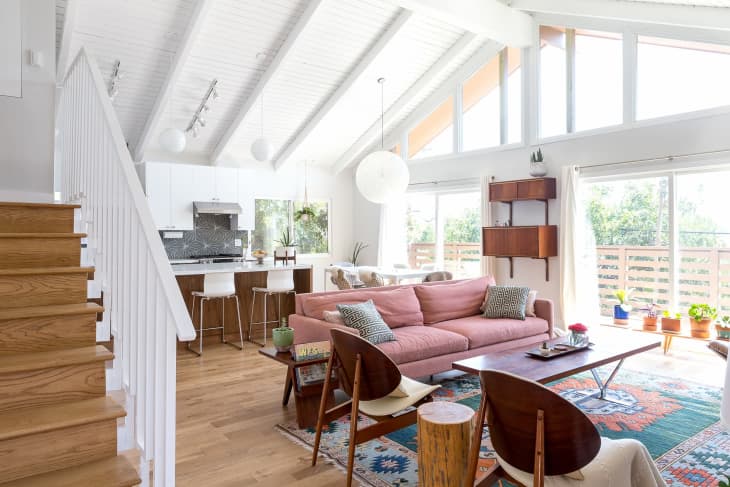8 Types of Staircases and How to Identify Them

More than just a way to move from floor to floor, staircases have a larger impact on your life than you may realize, whether it’s those grand staircases in movies and television — think “Downton Abbey” and “Titanic” — the humble ones, like the simple staircase under which Harry Potter lived, or the stairs you ran down every morning as a kid.
The type of staircase installed in a building is often dictated not just by stylistic desires, but by spatial constraints. Stairs can be simple and utilitarian, or stunningly ornate. But either way, stairs serve a purpose for people who are able to use them — here are a few different types of staircases, along with their functions and design needs.
Straight Staircase
This common staircase starts at one floor and rises directly to the next floor with no turns or curves. A straight staircase can have a landing — a larger platform between the main floor and first riser or after the last riser — at the top, bottom, or both. If the staircase is especially long, a landing may be inserted along the way, allowing people to rest as they climb the stairs.
Straight stair handrails often terminate in a newel post, or a large post that attaches to the floor and gives stability to the attached handrail. Straight flights of stairs can also be used to create a number of other types of staircases.
L-Shaped Staircase
L-shaped stairs are created when a series of stairs turns 90 degrees, either close to one end or in the middle of the staircase, with a landing that allows space for the stairs — and the people climbing them — to travel in another direction. L-shaped stairs are still relatively simple to build but create more architectural interest than a simple straight staircase.
U-Shaped Staircase
U-shaped staircases are common in office or school buildings and include a 180-degree turn. They begin facing one way and, at a large landing, change directions while continuing their ascent.
Bi-Furcated Staircase
If you’re looking for a grand staircase design, look no further than the bi-furcated staircase. The name may not sound familiar (and it doesn’t do the beauty of the staircase justice) but whether it’s the stairs where Jack waits for Rose on “Titanic” or the staircase that greets Belle in “Beauty and the Beast,” these staircases represent one of the most stunning designs.
Bi-furcated stairs begin with one straight staircase and branch off into two staircases going in opposite directions — either turning 90-degrees or 180-degrees and gracefully curving away from each other.
Double Staircase
If you’ve followed the Kardashians at any point in your life, you’ve probably seen Kris Jenner’s iconic double curved staircase. A double staircase uses two different staircases to reach the same landing on the next floor. They can be curved or straight depending on design needs or space constraints.
Floating Staircase
A floating staircase is the epitome of a modern aesthetic, but also a potential safety problem. Floating stairs are either set on a central stringer — the zig zag support system for the staircase — that supports each riser in the middle and allows the ends to “float,” or the stringers are placed at the edge of each riser allowing the middle to “float.”
Curved Staircase
A curved staircase typically doesn’t have a landing and begins with the first riser. The stairs are wedge-shaped and curve gracefully with the railing directly to the next floor. Curved staircases often flare out at the bottom to give people a little more space to maneuver, and the handrails often terminate in a volute, or the decorative spiral that ends the handrail.
Spiral Staircase
A spiral staircase works well in a small space — like this Santa Fe loft — because the risers wind around a central pole or support, allowing the staircase to ascend vertically rather than needing extra floor space from which to rise. While spiral staircases can be made of wood, they are often made from wrought iron or steel.